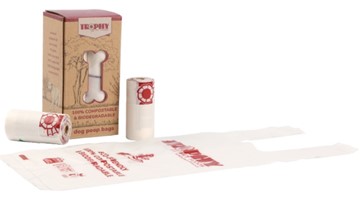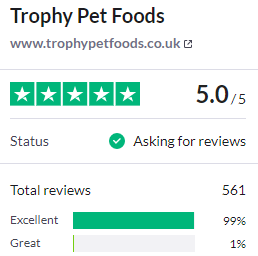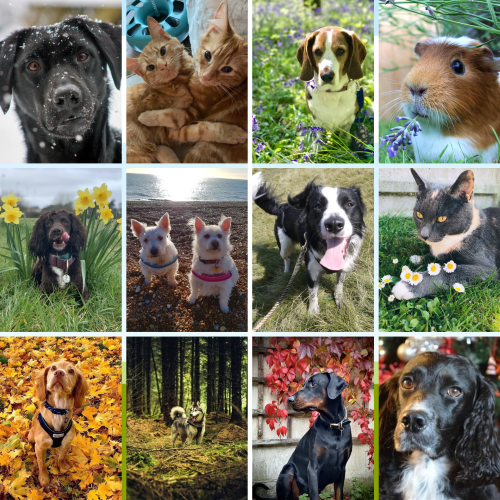Summertime Pet Care Tips
05 Jul 2019

As we head into summer and the weather gets hotter it may be good news for us, but it can bring about new challenges when it comes to looking after our pets.
As temperatures rise dogs often become more lethargic and less active, instead spending more time lying in the shade. Less time running and playing means that your dog will burn off fewer calories, so their energy demands from food are much lower. Because of this, owners often notice a drop in their dog’s appetite over the summer, but this does not necessarily need to be a concern. As long as your dog does not lose too much condition and stays at a healthy weight, don’t worry about them eating less! For dogs who are prone to weight gain, or particularly inactive it may be necessary to reduce the amount of feed that you give them over the summer.
Another concern for dog owners during the spring and summer are seasonal allergies. Just like some humans, dogs can have allergies to environmental allergens such as pollen. Certain breeds such as West Highland White Terriers, Fox Terriers and Boxers can be predisposed to seasonal allergies, but they can occur in any breeds. Scratching is the most common symptom, but others include inflamed skin, licking at the paws, hair loss and respiratory issues. If you suspect that your dog may be suffering from seasonal allergies it is essential to seek advice from your vet. Your vet may recommend a treatment and management plan to relieve your dog’s symptoms and make them more comfortable, however choosing a good quality feed from the Trophy Premium, Premium Holistic or Lifestyle range will provide your dog with a diet rich in omega 3 and 6 fatty acids, a fantastic way to support overall skin health and condition.
When dogs get hot they use panting as a mechanism to regulate their body temperature and keep cool. When dogs pant their breathing rate increases and there is increased evaporation of water from the surfaces of the mouth, removing heat from the body. In hot weather increased panting is normal, as it becomes harder for dogs to maintain their internal body temperature. Generally dogs manage to cool themselves down effectively, but owners should always keep an eye out for signs of overheating which include collapsing, bright red or blue gums, vomiting or diarrhoea. Some breeds of dogs cope much better in hot weather than others. Those with short snouts and flat faces such as Pugs, Boxers and Bulldogs, known as brachiocephalic breeds, have a different skull shape, which effects their airway anatomy, impacting panting and subsequent cooling ability. Dog breeds with particularly thick coats, such as Siberian Huskies or Border Collies often struggle to keep cool.
Although dogs do not sweat like humans do, when the weather is hot they still lose water when they pant, meaning that during extended periods of hot weather, with insufficient water intake dehydration can occur. Dehydration is most frequently observed in highly active dogs who exercise for long periods of time without drinking any water. Even if these dogs are constantly supplied with fresh water they may not spend enough time drinking. Signs of dehydration include lethargy, loss of appetite, a dry mouth and gums, sunken eyes and depression. If you think that your dog may be dehydrated it is crucial to seek veterinary advice.
Although managing pet dogs can be tricky over the summer months when the weather is hot, these top tips will help you to keep your dog safe, happy and healthy!
- Provide Fresh Clean Water at all Times – Water intake is essential to keep your dog healthy and hydrated. Monitor how much they drink so you can be sure that they are getting enough water.
- Add Water to Feed – Mixing your dog’s dry feed with water or feeding Trophy Holistic Wet Dog Food is a great way in increase water intake.
- Exercise your Dog Early in the Morning or Later in the Evening – When the temperatures are cooler your dog will be happier to walk, run and play, and less at risk of overheating or dehydration
- Always Provide Shade – A lot of dogs prefer to be indoors when it gets really hot, but outdoors trees and shelters are great ways to provide shade. Be careful of keeping dogs in kennels as some can act like greenhouses and become very hot.
- Never Leave Dogs in a Hot Car – It goes without saying, but any length of time in a hot car is too long.
- Be Careful of Hot Surfaces – Tarmac, cement or patios can get really hot, leading to pain, burning and blistering to the paws. Take this into consideration when planning your walks.
- Keep Your Dog Well Groomed – Get rid of any matts and tangles in your dogs coat as these can trap hot air and also create a better environment for flies to lay eggs.
- Trim Your Dog’s Coat – For some dog breeds trimming their coat is a great way to prevent them overheating, whereas other breeds will actually do better with their full coat. Ask a professional groomer for advice.
- Apply Sun-Cream – Pale-coloured dogs are vulnerable to sunburn, particularly on the ears and nose. Apply a specific dog sunblock, or a non-toxic waterproof human product to stop your dog burning. Always check the ingredients in human sunblock - start by contacting your vet.
- Ensure That Your Dog is Treated for Fleas and Worms – In the summer your dog will be at increased risk from fleas. Keep up to date with worming and flea treatments to keep your dog at optimal health.
- Provide Balanced Nutrition – All Trophy Feeds provide a balanced ration of vitamins, minerals and proteins, as well as additional support to keep your dog healthy all year round.
- Feed When Temperatures are Cooler – Just like us dogs will feel less hungry during the heat of the day. Feed earlier in the morning and later in the evening to help to maintain intake.
- Make Some Cooling Treats – Try making ice cubes with your dogs favourite treat in the middle – tasty and cooling!
- Provide a Paddling Pool or Sprinklers – Not only will they cool your dog down, but they can provide exercise, fun and entertainment.
- If You Have Any Concerns Speak to Your Vet – Hot weather does bring about more problems for your dog’s health, if you do notice any worrying signs it is always best to contact your vet for advice.
Our friendly Trophy Nutritional Advisors are available and happy to help you answer any questions that you have on how to look after and feed your dog during the summer!

Cosette Darby BSc (Hons)
Nutritional Advisor
01832 737 340
Back
Recent News

Fully compostable dog poop bags available

Trusted by pet owners for 30 years
